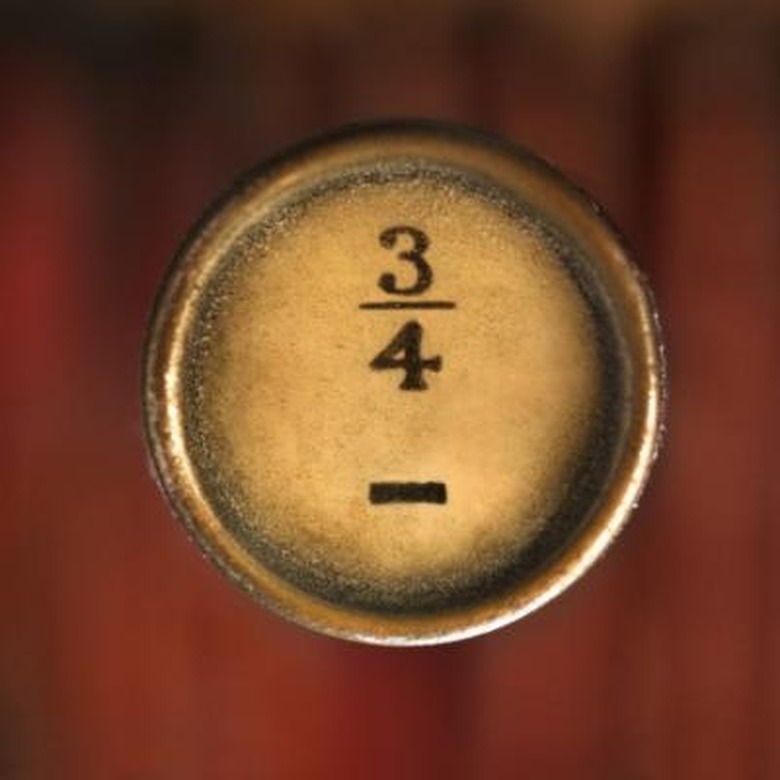How To Find Half Of A Fraction
When calculating half of a fraction, you are finding a fraction of a fraction. Fractions are composed of two integers, one stacked upon the other with a dash separating them. These two numbers – the top one termed the numerator and the bottom the denominator – make up a single value equal to less than one when the numerator is less than the denominator. You can halve a fraction through operations with its numerator and denominator.
Step 1
Reduce the fraction to be halved to its lowest terms. To reduce or simplify the fraction, you need to eliminate the numerator and denominator's greatest common factor, or the largest value that both share as factors. For an example, using the fraction 8/10, the factors of the numerator 8 are 1, 2, 4 and 8, and the factors of the denominator 10 are 1, 2, 5 and 10. For the numbers 8 and 10, the greatest common factor is 2. Eight divided by (8/2) equals 4 and 10/2 equals 5, so 8/10 reduced equals 4/5.
Step 2
Divide the reduced fraction's numerator by 2 if it is even. To halve 4/5, divide the numerator 4 by 2 and the final fraction is 2/5.
Step 3
Multiply the reduce fraction's denominator by 2 if the numerator is odd. As an example, the fraction 1/3 has an odd numerator. Multiply the denominator of 3 by 2 and the final fraction is 1/6.
Cite This Article
MLA
Gartneer, Chance E.. "How To Find Half Of A Fraction" sciencing.com, https://www.sciencing.com/half-fraction-8371910/. 24 April 2017.
APA
Gartneer, Chance E.. (2017, April 24). How To Find Half Of A Fraction. sciencing.com. Retrieved from https://www.sciencing.com/half-fraction-8371910/
Chicago
Gartneer, Chance E.. How To Find Half Of A Fraction last modified March 24, 2022. https://www.sciencing.com/half-fraction-8371910/
